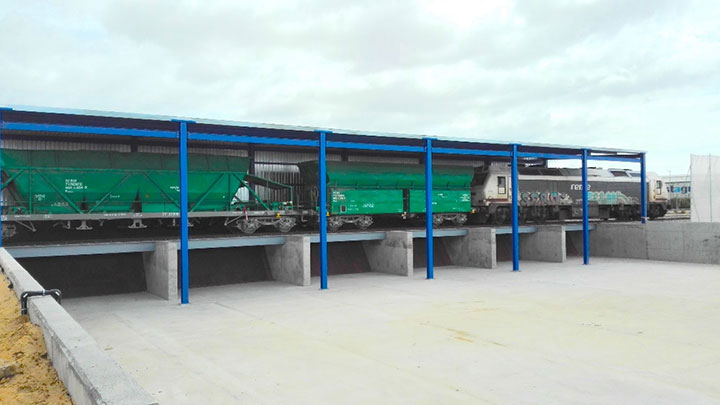Emission sources (A_05)
The main causes of air quality deterioration in the port are related to dust and particulate emissions.
The following is a breakdown of the main sources of emissions present in the port and their relevance:
| Type of activity | Order of relevance3 |
|---|---|
| Industrial activities in concessions (Calculated as the number of concessions where industrial activities involving emissions channelled into the atmosphere are carried out) | 1 |
| Emissions from vehicle engines | 2 |
| Emissions from ships and cruise ships at berth | 3 |
| Bulk solids handling by conventional means (Calculated as the number of licensed stevedoring companies moving bulk by grab/hopper-conventional/truck or grab/dock-stockpile/shovel/truck or truck/mobile-belt-conventional) | 4 |
| Bulk handling by means of special uncovered systems. (Calculated as the number of companies that have continuous uncovered or partially covered haulage systems) | 5 |
| Outdoor storage of bulk solids (Calculated as number of concessions storing bulk solids outdoors) | 6 |
| Emissions from unroofed lorry bodies | 7 |
| Works | 8 |
| Ship hull cleaning and painting (Calculated as the number of concessions performing hull cleaning and painting outdoors) | 9 |
| Other activities (please specify) |
3) Order of relevance Enter the order of relevance of each hotspot with numbers from 1 onwards, until all significant hotspots present in the port(s) are covered.
Complaints about air emissions (A_06)
The Port Authority of Huelva has a specific procedure for the reception and management of environmental complaints within its Integrated Quality and Environmental Management System. These complaints are referred to the relevant area of responsibility to be dealt with. The resolution of the complaint is communicated to the person or entity concerned from the Integrated Management System.
No formal complaints were received during 2024.
The Port Authority continues to collaborate in the monitoring of environmental aspects related to port operations and those of the concessionary companies, carrying out specific monitoring for episodes of possible atmospheric emissions in the service area in order to establish the appropriate preventive and corrective measures, if necessary.
Measures adopted by the Huelva Port Authority to control emissions (A_07)
The measures put in place are:
- Supply and installation of wheel washers at Muelle Ingeniero Juan Gonzalo.
- Good practice guides.
- Direct supervision on the quayside by Port Authority technicians.
- Irrigation systems for bulk stockpiles and roads.
- Warning and information systems linked to wind speed.
- Air quality prediction system.
- Fixed irrigation system in the storage area of Muelle Ingeniero Juan Gonzalo and Muelle Ciudad de Palos.
- Mobile irrigation system and intensive cleaning of spillages on roads.
Air quality monitoring (A_08)
With regard to air quality control, operations are continuously monitored, especially in the loading and unloading areas of bulk solids (as these are the most significant sources of atmospheric pollution), establishing specific measures during operations, including irrigation with nebulisers if necessary for the most dusty operations.

In the rest of the service area, intensive monitoring is also carried out by the Sustainability and Energy Transition Department in order to detect needs and establish the corresponding preventive and/or corrective measures, if necessary.